Giochi dell'Oca e di percorso
(by Luigi Ciompi & Adrian Seville)
(by Luigi Ciompi & Adrian Seville)

|
Giochi dell'Oca e di percorso
(by Luigi Ciompi & Adrian Seville) |

|
 |

Torna alla ricerca giochi (back to game search) |
 |
| Teutsche (Das) Ritterspiel | ||
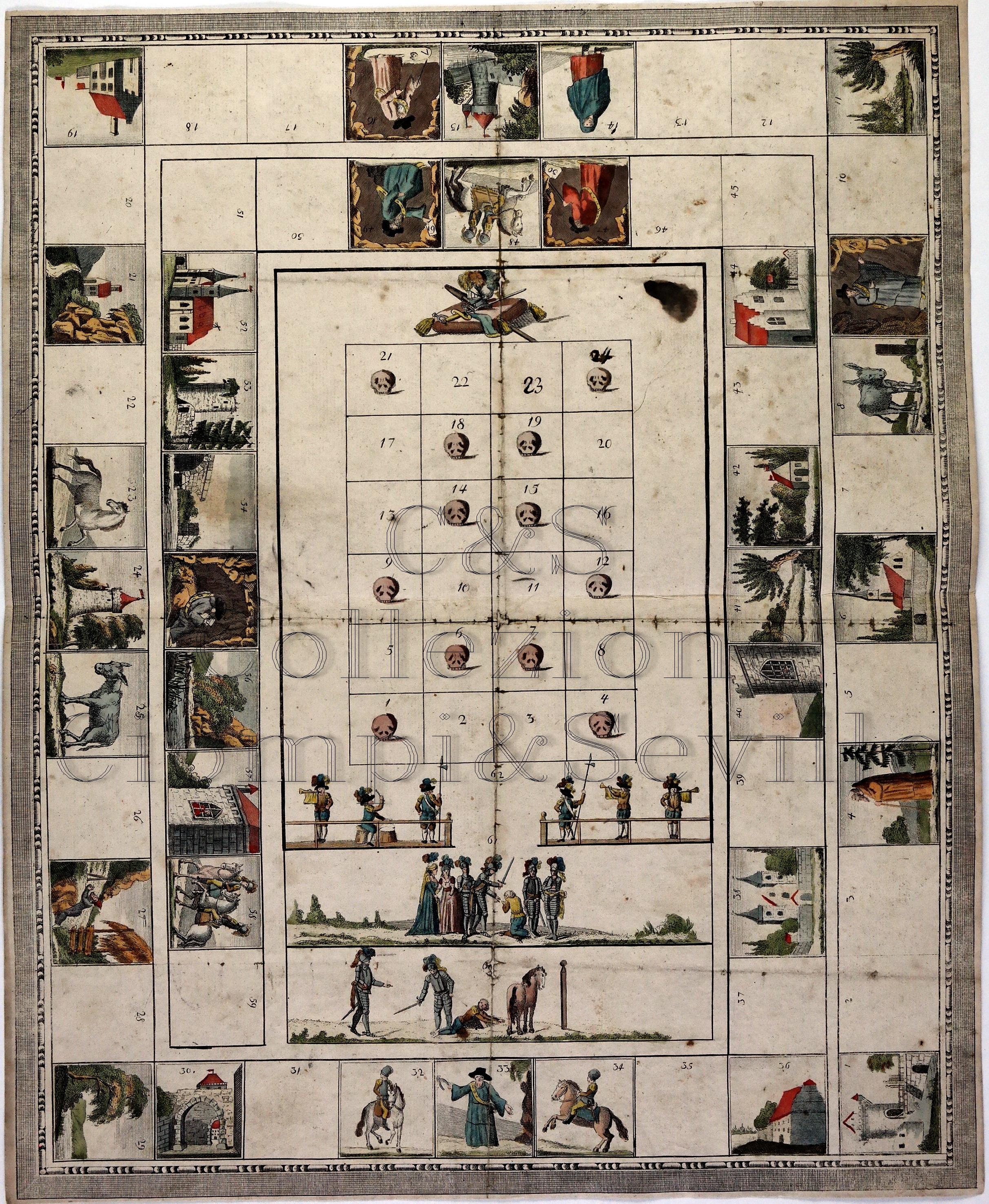 |
Versione stampabile
 |
Invia una segnalazione

|
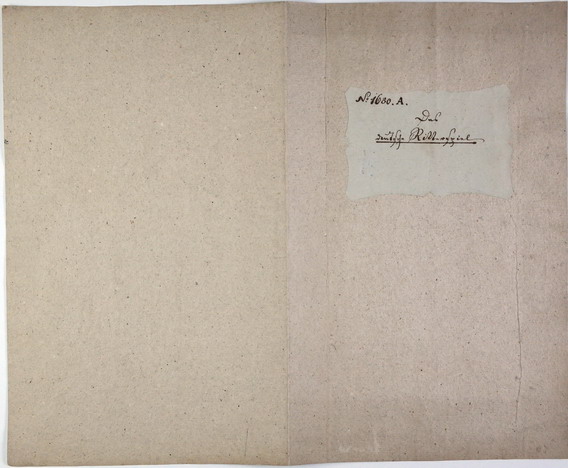 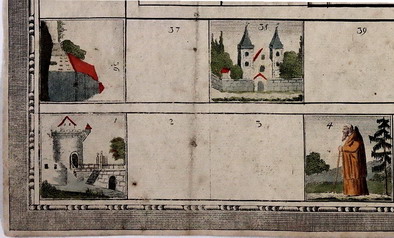 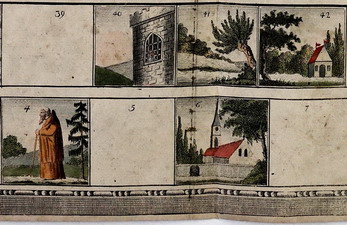 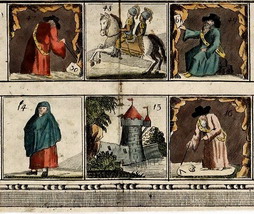 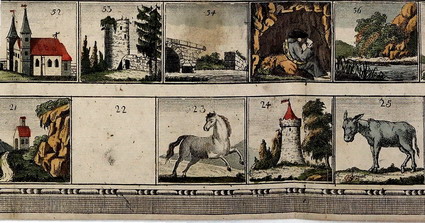 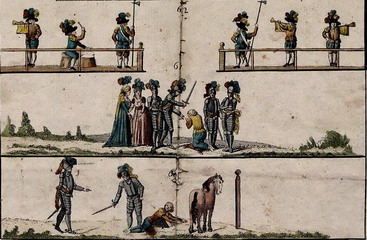 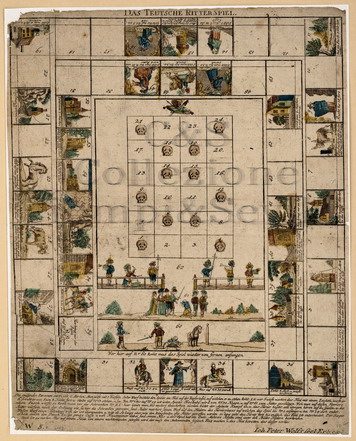 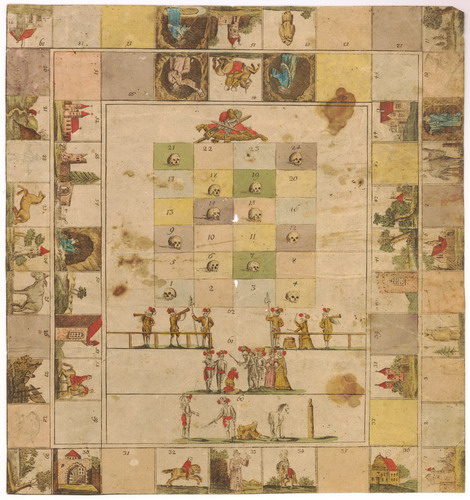 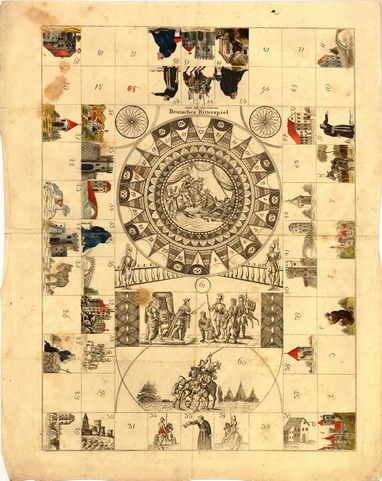 |
primo autore: | Non indicato |
| secondo autore: | Joh[ann] Gott[lob] Schladebach | |
| anno: | 1791 | |
| luogo: |
Germania-Lipsia |
|
| periodo: | XVIII secolo (?/4) | |
| percorso: | Doppio percorso di 62 e 24 caselle numerate | |
| materiale: | carta (paper) (papier) | |
| dimensioni: | 000X000 | |
| stampa: | Litografia colorata a mano (hand-coloured engraving) | |
| luogo acquisto: | ||
| data acquisto: | ||
| dimensioni confezione: | ||
| numero caselle: | 62 | |
| categoria: | Araldica | |
| tipo di gioco: | Gioco di percorso | |
| editore: | Joh[ann] Gott[lob] Schladebach | |
| stampatore: | Joh[ann] Gott[lob] Schladebach | |
| proprietario: | Collezione A. Seville | |
| autore delle foto: | A. Seville | |
| numero di catalogo: | 310 | |
| descrizione: |
Gioco di 62 caselle, spirale (rettangolare), antiorario, centripeto, che ha per tema il torneo. Al centro altre 24 caselle con disegnati dei teschi. REGOLE: non riportate sul tavoliere. CASELLE: mute. REFERENZA 1 An important early game is the Deutsches Ritterspiel [Game of the German Knights]. The version was published in Leipzig by Joh[ann] Gott[lob] Schladebach (1762-1833), with a booklet dated September 1791 setting out its complex rules. The track is a rectangular spiral of 62 spaces, enclosing a further track of 24 spaces, of which half represent a death’s head. Along the main track are various active spaces suitable to a fantasy journey of a young man becoming a knight, such as wizards good and bad, with correspondingly favourable or unfavourable effect, enchanted castles and the like. Space 60, showing an unhorsed knight, is similar in action to the Death space in the Game of the Goose. Space 61, however, is of happier consequence: it shows the sword-stroke which makes the young man a knight. He stays here until he throws doublets, whereupon he becomes a knight and advances to space 62, where he waits, without throwing, until another knight arrives. They then proceed to the joust, represented by the second track. Landing on a death’s head means that the player has been overcome, and must quit the field. The winning space shows a knight victorious. One might think that playing this game is an essentially male occupation. That thought is dispelled by a special section in the rules, explaining that when ladies participate, they must give a kiss to the victorious knight.49 Also, if a male player lands on either the enchanted tower or the enchanted town, he may nominate one of the female company to represent the damsel confined there, who rewards the one who frees her with a kiss. The booklet concludes with the wish that all should enjoy playing the game in good company. It is unusual to find such explicit confirmation that a game is suitable for mixed company, rather than for gambling or drinking. [Adrian Seville] NOTA: notare versione di Ioh [Johann] Peter Wolffs Seel Erben (eredi di JP Wolff) con didascalie, Arch. n°1266 ; esemplare simile conservato al British Museum senza didascalie, Arch. n°2736 ed esemplare di analogo gioco realizzato da Antonio Paterno, Arch. n°1326. |
|
| bibliografia: |
1) BUIJNSTERS, P.J. - BUIJNSTERS-SMETS, Leontine: "PAPERTOYS. Speelprenten en papieren speelgoed in Nederland (1640-1920)". Waanders Uitgevers-Zwolle, 2005. 2) DOMINI, Donatino: "Giochi a stampa in Europa dal XVII al XIX secolo" Longo Editore Ravenna, 1985 3) SEVILLE, Adrian: "The Cultural Legacy of the Royal Game of the Goose". Amsterdam University Press, 2019, pag. 203. |
|
Vai alla ricerca giochi Vai all'elenco autori